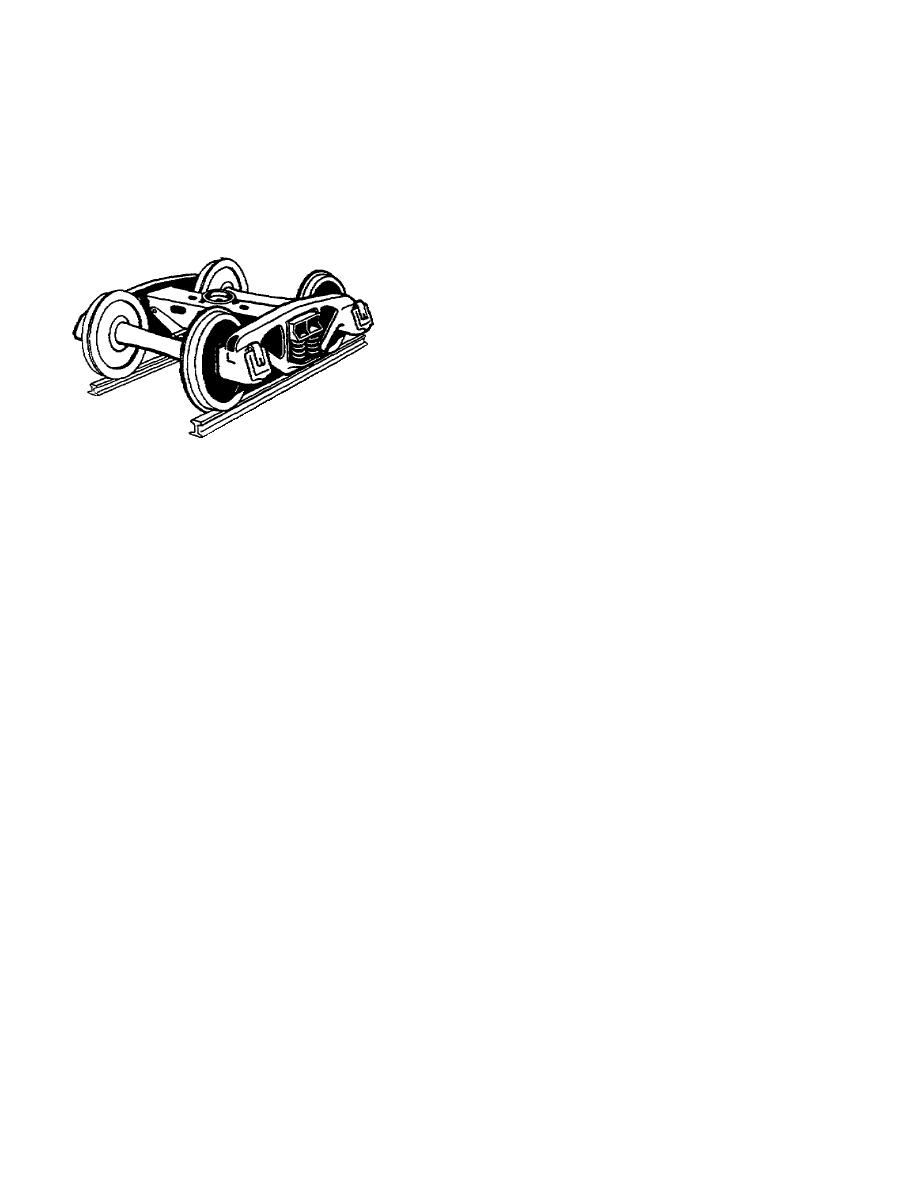
Chapter 3
TRUCKS
3.1. GENERAL
Trucks
are
located at both ends of a railway car. Supporting the car body, they distribute the
weight of the car and its contents to the wheels and axles attached to
them. Since the majority of trucks in general use have only four
wheels, this chapter concentrates upon them.
Those with six
wheels are designed to carry very heavy loads or run at high speeds.
Besides
distributing weight to the wheels, trucks have several other functions. They must
swivel freely beneath the car to permit it to travel over curved track without derailing and they must not interfere
with the operation of other car parts. As a railway car is pulled over the rails, many shocks and vibrations
develop; trucks must provide a means of absorbing them to keep the lading from being damaged or the
passengers from being uncomfortable. Finally, just as wheels must have a source of energy to start and keep
them rolling, they must have brakes to slow or stop them; trucks must provide a means of mounting brake
rigging that works efficiently with other parts of the braking system mounted on the car body.
To provide all these functions in varying degrees, a variety of trucks have been designed and constructed.
This chapter does not attempt to cover all different designs, but one typical four-wheel truck, with all of its parts
and their functions, is explained in detail. Some of the more common variations are also presented. Paragraph
3.7 describes briefly a six-wheel truck.
3.2. MAJOR COMPONENTS
The typical truck, shown in figure 3.1, consists of the truck bolster assembly, the side frame with its
journal box assembly, the brake rigging, and the wheel and axle assembly. With the exception of the wheel and
axle assembly covered in the preceding chapter, each of these major components is explained in the order
mentioned. As each component is explained, the way in which it is
48



 Previous Page
Previous Page
